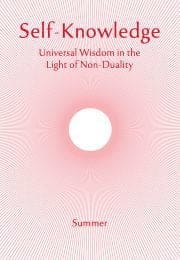Inspirations from the Brihadaranyaka Upanishad
CHILDREN ask questions, ‘Why this, why that?’. Probably, even in ancient civilisations, little boys and girls spontaneously and persistently confronted their parents with the great word: ‘Why?’ or its equivalent. The Upanishads emerged out of this questioning spirit of human nature.
There was also a worshipping spirit. But it was mixed with fear. The universe—the all—seemed to be under the control of invisible forces. Let me worship them with ceremonies, prayers, hymns, sacrifices, so that I might stay safe while I live and after I die. The early civilisation in what is now called India developed many hymns, ceremonies and rituals in order to win the favour and protection of the unseen forces.
But alongside this outer expression of the religious spirit, there was also a tendency to question, to look for a deeper meaning and purpose, to gain a comprehensive and satisfying understanding of all we are experiencing, and even to check whether we are experiencing it in the right way.
They asked: ‘Are there many gods, or forces of nature, or are they imagined expressions of one supreme power? Is that power really separate from me, or is there some hidden connection, even a oneness between what I am and the whole of reality? People come and go; and our loved ones, who seemed to be a permanent support, are eventually, or suddenly lost to us or we to them. Suffering seems unavoidable, however much I pray and worship. How real is this experience, for everything is passing and therefore not wholly reliable?’
Such concerns inspired some to change their religious approach. They turned to meditation, and went to live in the forests, where they felt they would gain greater peace and focus. And out of the old collections of hymns and ritualistic instructions, which collectively were called the Vedas, emerged a new body of teaching, called the Aranyakas—aranya meaning forest. Here the stress was not on outer action but inward reflection on spiritual symbols, by endowing them with a cosmic significance. The Brihadaranyaka Upanishad, to the puzzlement of first-time readers, starts with a description of such an Aranyaka meditation on the ‘horse sacrifice’ performed by kings; happily, no physical activity is prescribed—it is a meditation on cosmic ‘correspondences’, such as envisaging the horse’s head as the dawn, its eye, the sun, and so on.
Subscribe or enrol for free guest access to read all of this article and Self-Knowledge online.
Already subscribed or enrolled? Log in:


